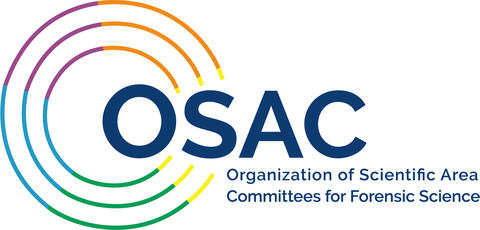Changes to OSAC's Structure and Processes

Overview
On October 1, 2020 NIST officially launched a new and streamlined Organization of Scientific Area Committees (OSAC) for Forensic Science. The changes to OSAC’s structure and processes, which are detailed below, will enable OSAC to make high-quality, science-based standards available to forensic laboratories more quickly.
Updates to OSAC's Organizational Structure
Scientific Area Committees (SACs) expanded from five to seven.
- The Chemistry/Instrumental Analysis SAC has been split into two SACs — Chemistry: Seized Drugs & Toxicology and Chemistry: Trace Evidence.
- A new Medicine SAC has also been established to provide leadership over the Forensic Anthropology, Forensic Odontology, Medicolegal Death Investigation subcommittees, and the newly formed Forensic Nursing subcommittee.
Subcommittees reduced from 25 to 22.
- The Biological Data Interpretation & Reporting Subcommittee and the Biological Methods Subcommittee have been combined into the Human Forensic Biology Subcommittee.
- The Fire Debris & Explosives Subcommittee and the Gunshot Residue Subcommittee have been combined to form the Ignitable Liquids, Explosives, & Gunshot Residue Subcommittee.
- The Materials (Trace) Subcommittee and the Geological Materials Subcommittee have been combined to form the Trace Materials Subcommittee.
- What was formerly the Disaster Victim Identification Subcommittee is now a task group within the Medicolegal Death Investigation Subcommittee.
- A new Forensic Nursing Subcommittee has been created.
Resource committee members have been absorbed into subcommittees and task groups.
- Resource committees have been dissolved and their members have been added to subcommittees as voting members. This will allow legal, human factors, statistics, and quality assurance concerns to be addressed earlier in the standards drafting process.
- Virtual task groups have been established to allow OSAC legal, statistical, human factors and quality assurance experts to collaborate on topics of common interest.
Updates to the Registry Approval Process
Technical review and public comment happen earlier in the process.
Previously, standards documents received final technical review after they were published by a standards developing organization (SDO) and while they were being considered for placement on the OSAC Registry. Now, newly conceived scientific and technical review panels (STRPs) will review many of the proposed standards before they are sent to an SDO. Stakeholders will also be invited to submit editorial and technical feedback on the draft at this earlier stage. Incorporating diverse input — including legal, human factors, quality assurance and statistics — earlier in the process will reduce the number of revisions required later and reduce the total time required for proposed standards to be developed and published.
The OSAC Registry includes both published and proposed standards.
The OSAC Registry will continue to be a trusted repository of high-quality, technically sound standards for forensic science. Previously, the registry only included published standards that had been reviewed and approved by OSAC. Now, OSAC’s proposed standards will also be included on the OSAC Registry. This indicates that the proposed standards have undergone a rigorous quality review and will allow labs to get a jump on implementing high quality standards.
The OSAC Registry approval process has been streamlined.
We have reduced the amount of paperwork and the number of steps involved in the OSAC Registry approval process. This will make the process more efficient while maintaining the rigor of technical review and the quality and diversity of stakeholder input.
Registry Implementation
OSAC has published the Registry Implementation: A How-to Guide. This document provides possible pathways and examples for laboratories and other forensic science services providers to consider as they look to incorporate the OSAC Registry standards. Additional resources can be found on OSAC’s Registry Implementation webpage.

